Ouse Valley Viaduct in West Sussex| How To Visit [2024]

Considered an engineering marvel, not least for its striking appearance. With its ornate design, the Ouse Valley Viaduct has been described as “probably the most elegant viaduct in Britain.
Constructed in the 19th century as a critical passageway for the London-Brighton railway line over the River Ouse, to this day the viaduct continues to transport over 100 trains daily.

Finished in 1842, its remarkable semi-circular arches and vaults create a captivating visual impact when viewed from below.
This stunning Grade II listed Victorian red-brick structure has taken Instagram by storm and a simple photo does not do it justice. So, you simply must visit breathtaking viaducts in England and experience its enchantment in person while visiting the South East of England.
It’s popular among tourists and locals, especially those keen on a unique holiday photograph.
Yet the site seems untouched by cynical commerciality – you have to walk through a farmer’s field to get there, after all. Let’s take a closer look at the Ouse Valley Viaduct, one of West Sussex’s prettiest architectural attractions, which also makes a fantastic day trip from London.
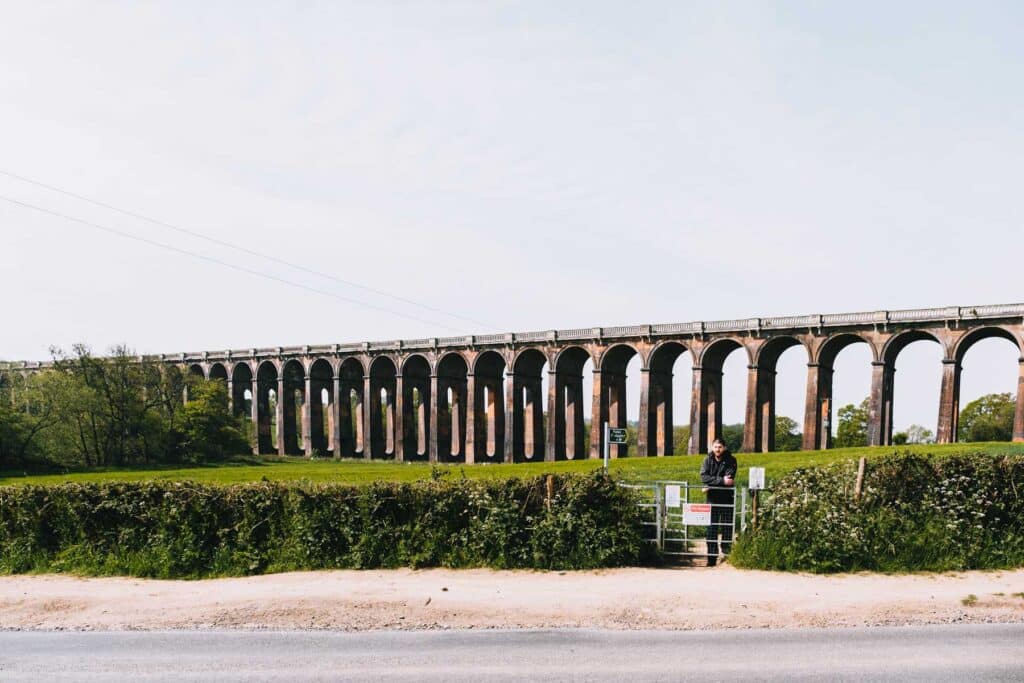
History of Ouse Valley Viaduct
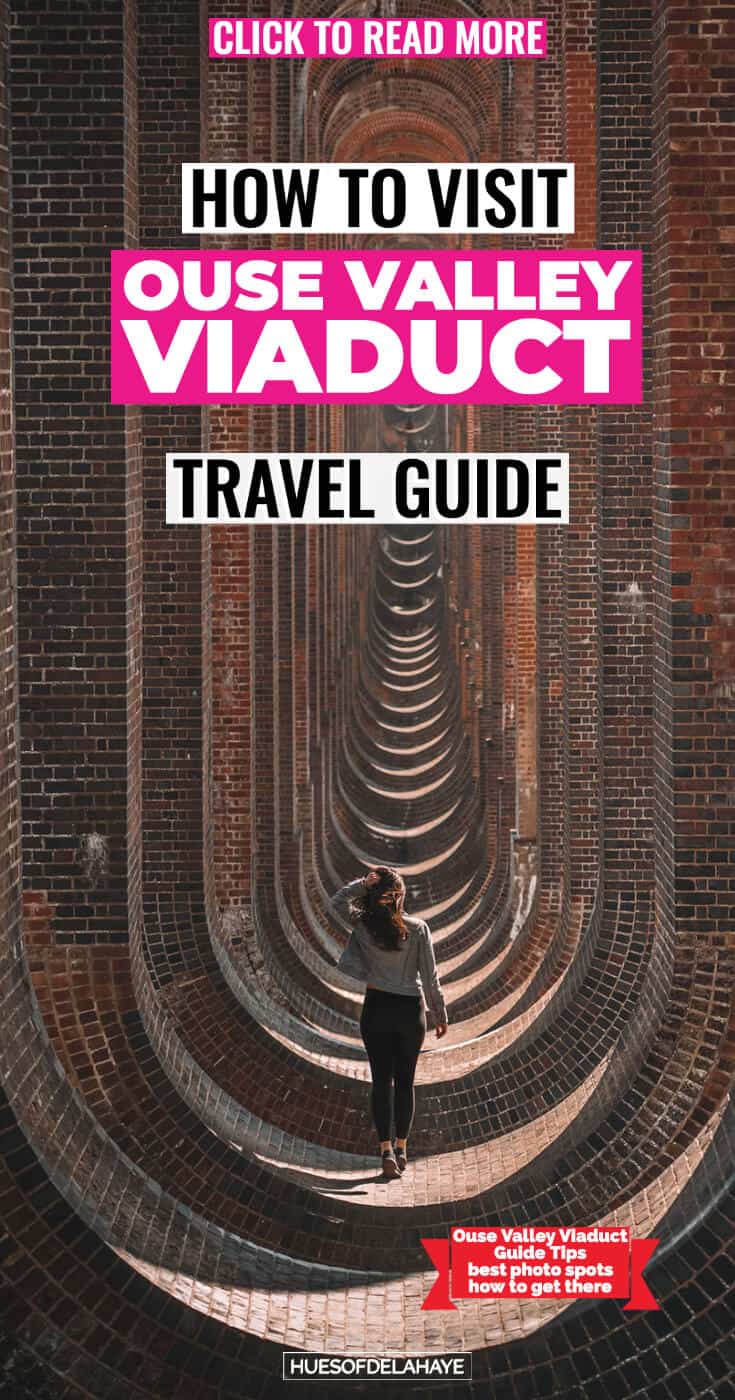
The Ouse Valley Viaduct was built between 1838 and 1841 as a railway route and still serves around 100 trains per day. It was constructed as part of the direct rail line system between London and Brighton with work commenced by the London & Brighton Railway company in 1839.
John Urpeth Rastrick, the principal engineer, crafted this incredibly impressive structure of red brick tunnels spanning across Ouse River swales. Despite its immense size and complexity, he managed to make it an architectural masterpiece.
Because of the geographical challenges, four tunnels and the viaduct were required for the route. The Ouse Valley Viaduct remains by far the most visually stunning feature of the route. It is extraordinary for several reasons. Perhaps the most well-known is the sheer amount of bricks that were used to build it.
Ouse Valley Viaduct Facts and Figures

✅ It is estimated that 11 million bricks were used in the building of the viaduct, though it is hard to find anyone who actually claims to have counted them.
✅ Many of the bricks are said to be imported from the Netherlands, with other materials such as caen stone also imported from Normandy.
✅ The bridge stretches 449.5m in length. The highest point is 29.3m. The structure is sometimes referred to as the Balcombe Viaduct – Balcombe is a nearby West Sussex Valley village. Confusingly, some also refer to it as the Haywards Heath Viaduct, though that town is further away.

✅ The Ouse Valley Viaduct crosses the Ouse River, using 37 semi circular arches as its supporting structure. The arches feature pierced architectural piers. The arches are 9.1m across in size and each pier has a jack arch with a semi circular soffit.
✅ The brick piers, pierced by 3m vertical voids or gaps, complete a design that looks elegant and graceful, complimenting the overall warmth of the red brick.
✅ In 1996, the historic viaduct underwent a £6.5 million restoration project under Railtrack’s direction and with financial contributions from West Sussex County Council, Railway Heritage Trust and English Heritage.
Where is Ouse Valley Viaduct in Sussex?
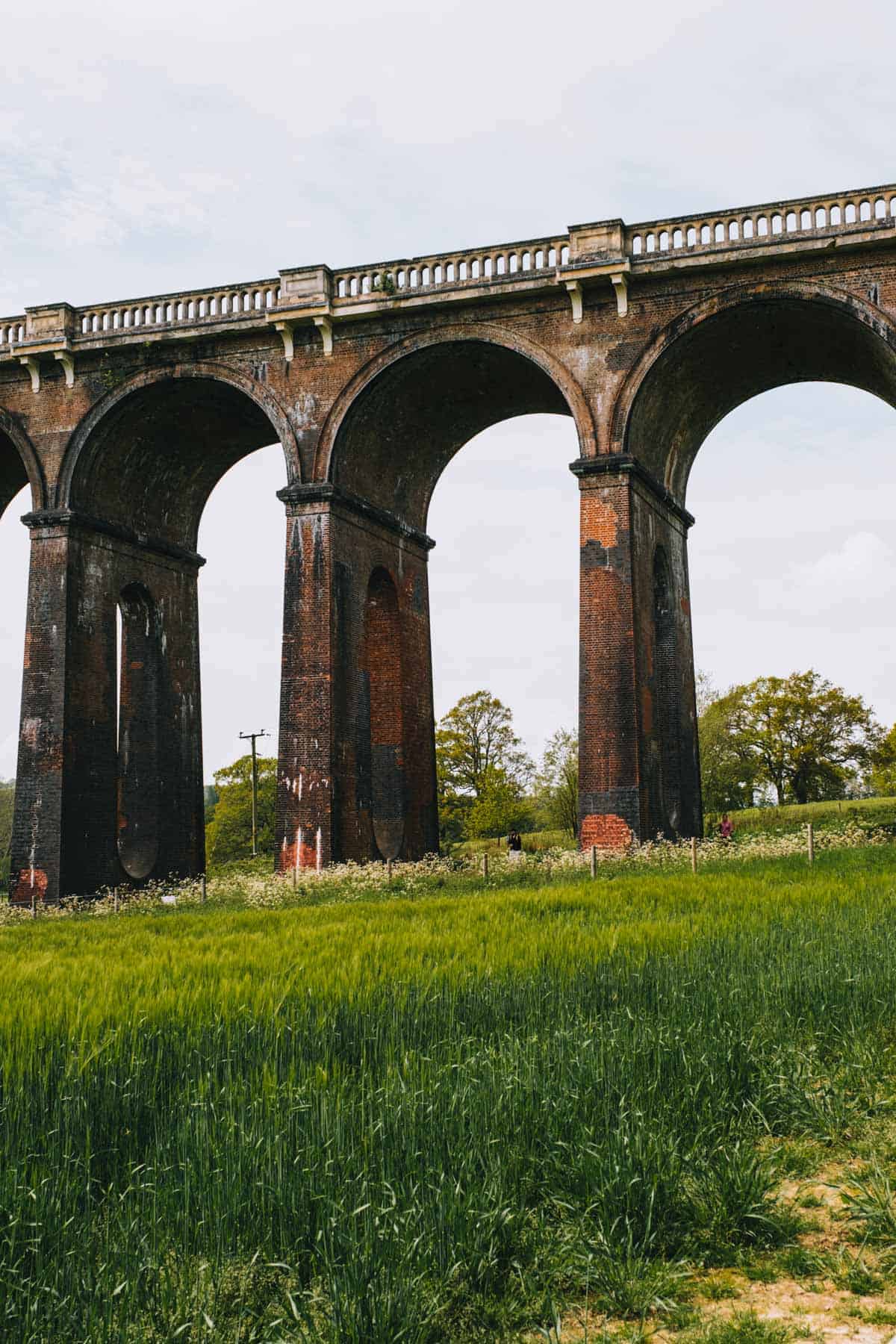
So where is the Ouse Valley Viaduct? The Ouse Valley Viaduct also called Balcombe Viaduct stands just south of the town of Balcombe and north of Haywards Heath in Sussex County, England.
Why You Should Visit the Balcombe Viaduct
Quite simply put, the visual marvel that is the Ouse Valley Viaduct and nearby river Ouse makes it an excellent stop to just pause for a moment in the wonder of superior British engineering. Once you know some of the facts above, it’s even more astounding.
Visitors love to take photos here, especially within the arches of this relatively elegant structure and trainspotters will enjoy the sight of the London Brighton railway line as the trains go by. It could also be a romantic detour on your way to Brighton or The Seven Sisters Cliffs in the South Downs, and many take the opportunity to picnic there on warmer days.
Ouse Valley Viaduct – Things to Know Before You Visit
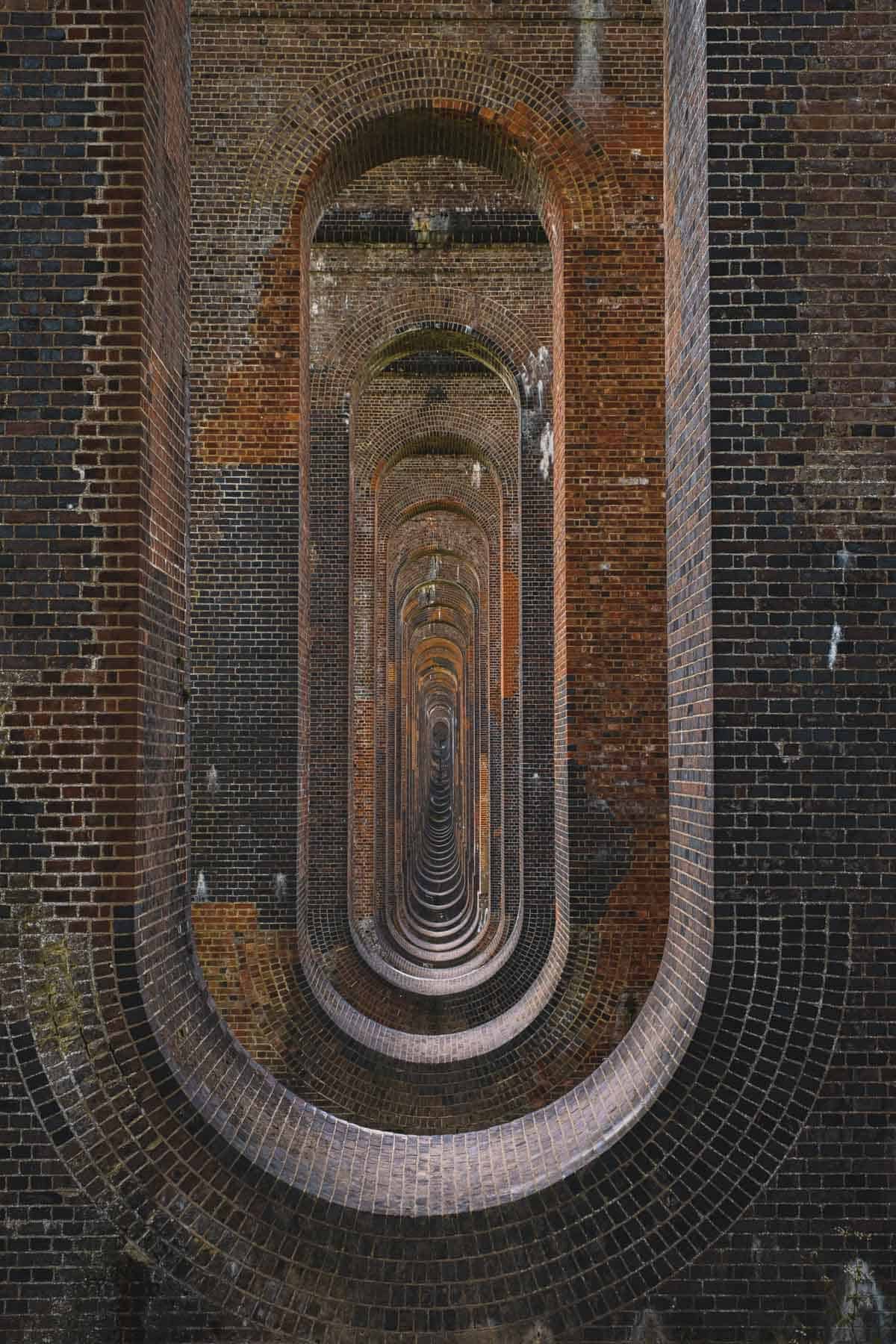
The viaduct can be seen from a short distance away if you’re not keen to leave your car behind. But to get to the base of the bridge itself, you will need to cross a farmer’s field on foot. With all the people visiting, it’s surprising that the farmer doesn’t seem to mind, as long as you don’t damage the crops.
Pro Tip: Be advised that the ground here gets exceptionally muddy. This is farmland, after all. You may want to bring along a good pair of wellies or at least hiking boots for the short walk, or if you’re planning on doing one or more of the circular walks (see below).
How to Get to Ouse Valley Viaduct by Car or Train
Wanting to experience the viaduct as intended?
Ouse Valley Viaduct by Train: Depart from London’s Victoria Station take the Brighton main line and head south to arrive at Balcombe railway station. Tickets start at around £26-£42 and the ride takes around two and a half hours. From Balcombe, it’s a pleasant 3.5km walk to the viaduct itself.
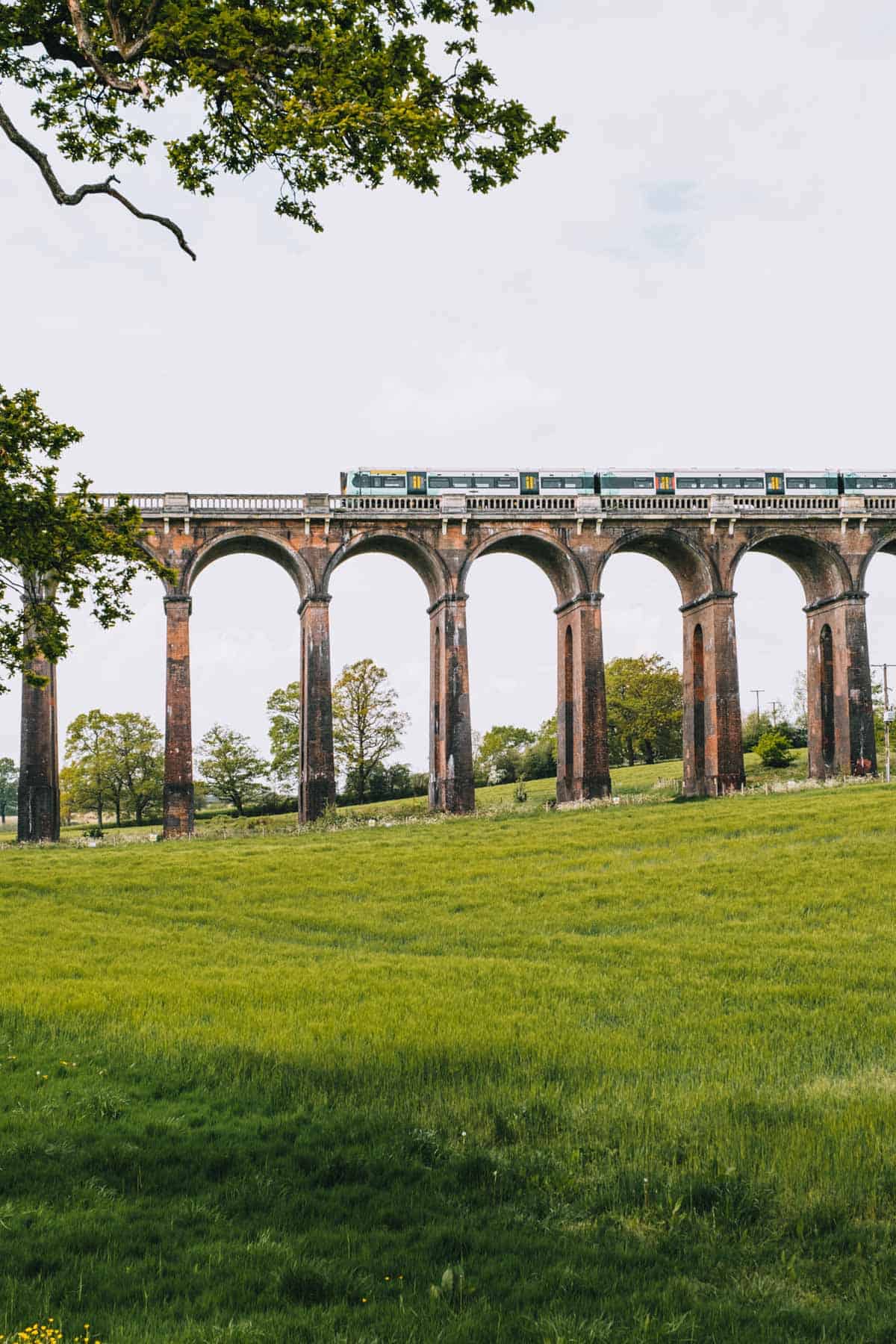
You could also opt for a longer 13km walk if you choose to leave from Haywards Heath Station, which is just 8km from Balcombe. Either way, it’s a pleasant route, taking in the sights of the reservoir, the viaduct and everything in between.
Pro tip: For cheaper train tickets try booking your tickets in advance.
Ouse Valley Viaduct by Car: Getting there by car is easy as well. Take the A23 south out of London, joining up with the M23. It takes 80-90 minutes through Croydon, skirting east of Crawley.
Ouse Valley Viaduct Parking
Driving instead? The best official parking spot is Ardingly Reservoir car park which is free. From here it’s a short 1km walk to the viaduct.
Some take a chance at parking along the road, closer to the viaduct on Broad Hill Lane which is just outside the access gate to the valley viaduct.
But this isn’t recommended. It’s undesignated and inconsiderate for other road users. There’s also the chance you may be fined or towed.
Ouse Valley Viaduct Opening Times
While a warm sunny day would be an apparent time to visit any outdoor site, many visitors to the viaduct seem to arrive in the mid-morning.
Those looking for a more spectacular display of colours and shadow might wait for the afternoon – just after lunch. This will also be a slightly less busy time, as the afternoon generally seems less crowded around the viaduct for some reason.

Best Time to Visit Ouse Valley Viaduct
While a warm sunny day would be an apparent time to visit any outdoor site, many visitors to the viaduct seem to arrive in the mid-morning.
Those looking for a more spectacular display of colours and shadow might wait for the afternoon – just after lunch. This will also be a slightly less busy time, as the afternoon generally seems less crowded around the viaduct for some reason.
Things To Do In Ouse Valley Viaduct
Ready to explore the Balcombe Viaduct? Whether you simply want to snap some Instagram photos or have the Balcombe Viaduct be a pitstop on your way to Brighton, there are plenty of things to do in Ouse Valley Viaduct.
Take Photos of Balcombe Viaduct
Whenever anyone comes to the Ouse Valley Viaduct, they never forget to bring a camera. Why? Because it has an optical illusion that creates a tunnel of infinity when you stand in one of its archways and take a picture.
It is quite simply breathtaking and provides an incredible photo opportunity. Don’t miss out on this unique chance to capture yourself inside this architectural masterpiece.

Ouse Valley Viaduct Photo Tips
Whether or not you’ve snapped a great photo is somewhat subjective. But there are preferred options for making the most of the location and situation. In the case of the viaduct, try the following:
📸 From a distance: As you approach the Ouse Valley Viaduct, you may catch an excellent sight of the bridge from a distance. Seeing this in the bright morning light enhances the upward angle.
📸 Within the arches: Taking a shot of yourself sitting within the arches is a popular option. With the right angle, you could create a fantastic photo with endless arches disappearing into the distance behind you.
📸 Consider the time of day: The sun moves across the structure casting shadows and light differently as the day goes on. The arches won’t catch any light before 11 am. The afternoon sun may bring out the red colour of the bricks, but wait a bit longer, and you’ll have eerie shadows to contrast.
For more tips, check out my guide on improving your mobile photography skills to take better travel photos.
Ouse Valley Viaduct Walks
Walks from Balcombe and Haywards Heath have been mentioned. Let’s take a closer look at some of these walks around the Ouse Valley Viaduct and the nearby Ardingly reservoir and reserve.
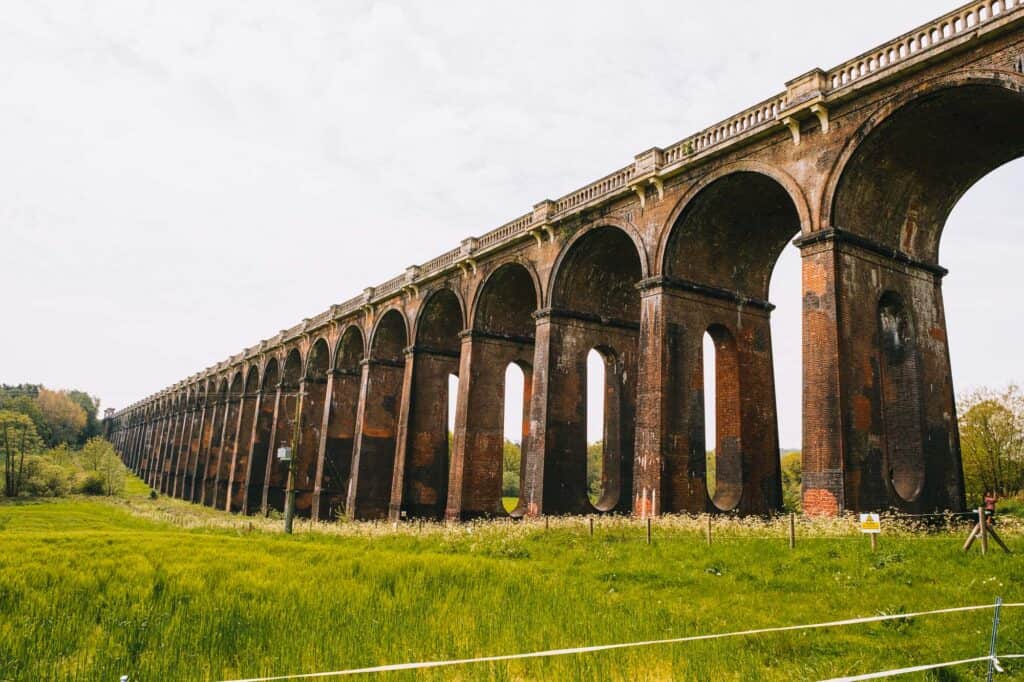
Ouse Valley Viaduct Walk – 3.5km
This pleasant circular Balcombe Viaduct walk starts at the Ardingly reservoir car park. It’s a car park shared with the visitor centre, so it may be a little busier during tourist season. The walk heads south towards the river and then along the water’s edge to the viaduct.
After a while, the route turns towards Rylands Fram and then onto the Stonehall cottages. You can pick up some light walking trails back to the car park to complete the circular from that point.
Ardingly Reservoir Walk – 8 km
Starting at the same Ardingly reservoir car park and following the initial walk south and along the river, this walk then continues onto Balcombe.

You’ll be ambling around the reservoir and its reserve. It’s an excellent opportunity to catch some of the river-based wildlife, especially birds. Kingfishers are commonly seen, as well as crebes. It’s a slightly longer walk without being too strenuous. And of course, you can always stop in the village for a break.
Cuckfield & Ouse Valley Viaduct Walk – 16km
For serious walkers, a longer 16km walk could be a fantastic way to spend the day. This one starts in the nearby town of Cuckfield, meandering past Borde Hill Gardens. Cross the Ardingly branch railway line and head down into the Ouse Valley itself. It’s an admittedly more challenging walk, offering several climbs and inclines.
Watch The Trains Go Over the Ouse Valley Viaduct Bridge
If you’re a trainspotter, rejoice! You won’t have to wait long before witnessing an enthralling experience – watching the train speed across this viaduct. Even today it’s still functioning as a major line connecting London with Brighton.

The view of trains from the field while making your way towards the viaduct is incredible; however, being underneath when they come roaring over will be an absolute spectacle: the entire bridge rumbles at that moment.
Visiting The Ouse Valley Viaduct in West Sussex England
As a fine example of a great Sussex County bridge in the heart of the south country, the Ouse Valley Viaduct is indeed one of a kind.
It’s also uniquely quaint in that it can be experienced on a day trip from London via train, as it was perhaps intended. But its main point of popularity is as a photographic location. Sitting in its arches has become one of the must-dos for local visitors.
Yet, it remains somehow exempt from the commerciality of other tourist attractions. So, pay a visit to the River Ouse in Sussex, and make a point of finding just the right time of day, and the right angle, from which to snap this marvel of 1800s architecture.
If you liked this guide and want real-time London/UK travel information, make sure you follow me on Instagram @huesofdelahaye and subscribe to my Youtube channel for weekly travel videos.